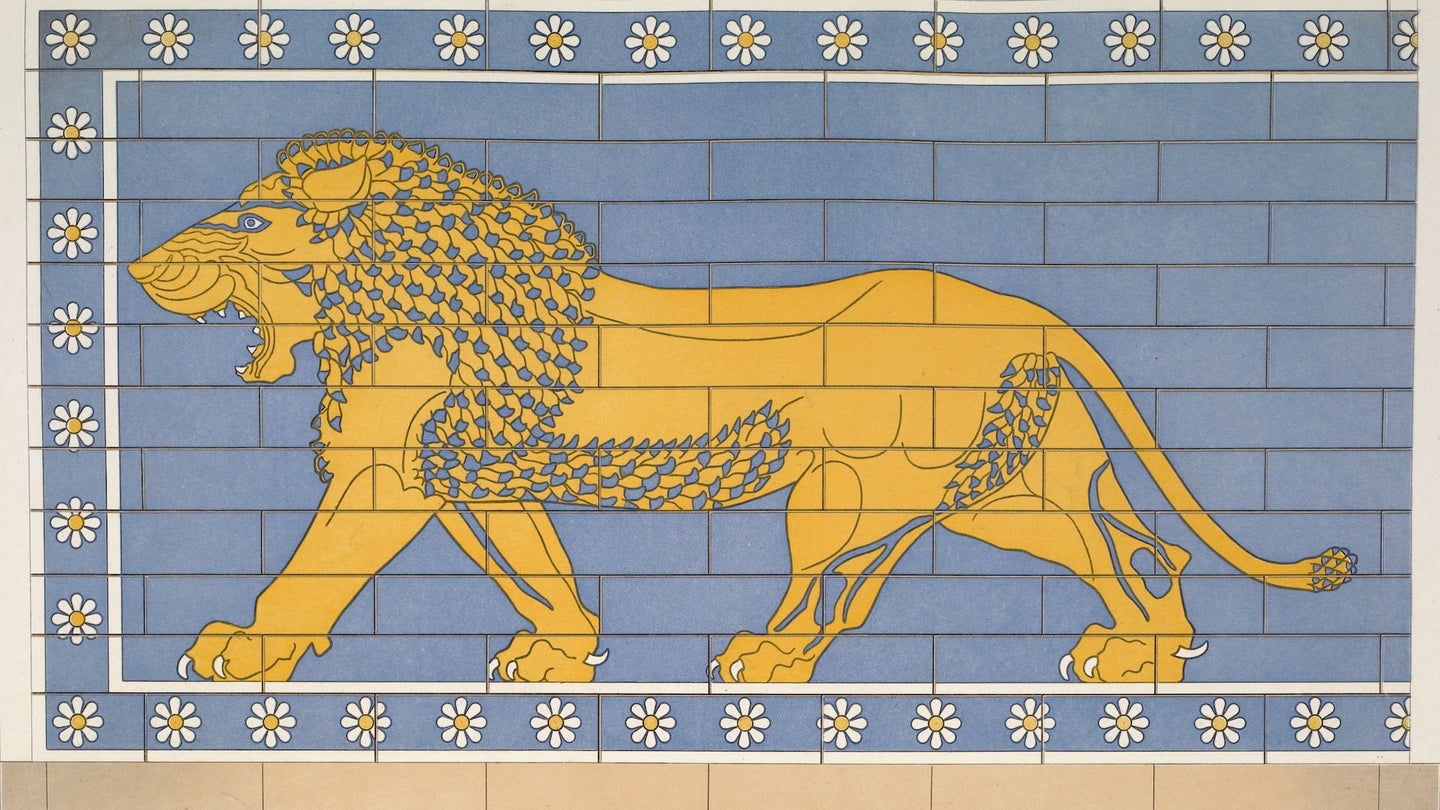Ancient mystery code was probably Sargon II’s name
A lion, an eagle, a bull, a fig tree, and a plow all came together to point to one of Mesopotamia's greatest rulers.

King Sargon II was a big fan of seeing his name around town—at least, that’s what one expert believes after reviewing a series of repeating mystery images that have confounded researchers for well over a century.
Ruler of the Neo-Assyrian empire from 721-704 BCE, Sargon II oversaw huge portions of ancient Mesopotamia, and is considered one of the era’s greatest military strategists. By the time of his death in 705 BCE, the king had either conquered or neutralized all his major political threats, a feat celebrated by his establishment of a new Assyrian capital in present day Khorsabad, Iraq, called Dūr-Šarrukīn, or “Fort Sargon,” in 706 BCE.
Excavations of the city during the late-nineteenth century revealed a sequence of five symbols repeated across multiple temples throughout Dūr-Šarrukīn—a lion, an eagle, a bull, a fig tree, and a plow. In some cases, however, there is similar art using just the lion, tree, and plough. Although the images appear similar to Egyptian hieroglyphics, the Assyrian empire during Sargon II’s reign had long utilized their non-pictorial cuneiform for written communication. Because of this, researchers have spent years theorizing about what the five total images might represent. Given Sargon II’s regal ego, historians have previously surmised the art could potentially represent his name in some form, but weren’t clear how that could be the case.

“The study of ancient languages and cultures is full of puzzles of all shapes and sizes, but it’s not often in the Ancient Near East that one faces mystery symbols on a temple wall,” Martin Worthington, a Trinity University professor specializing in ancient Mesopotamian languages and civilizations, said in a recent statement.
But according to Worthington, the answer is relatively simple and characteristic of the time. In his new paper published in the Bulletin of the American Schools of Oriental Research, Worthington argues the five images, when sounded out in ancient Assyrian, approximate “šargīnu,” or Sargon. Even when just the trio of pictures appears, their combination phonetically still resembles a shortened form of “Sargon.” Combined with the religious undertones of Assyrian constellations, Worthington contends the king was intent on making sure everyone knew just how great and powerful he was.
“The effect of the symbols was to assert that Sargon’s name was written in the heavens, for all eternity, and also to associate him with the gods Anu and Enlil, to whom the constellations in question were linked,” he writes in his new paper’s abstract. “It is further suggested that Sargon’s name was elsewhere symbolized by a lion passant (pacing lion), through a bilingual pun.”
[Related: How cryptographers finally cracked one of the Zodiac Killer’s hardest codes.]
“[It was] a clever way to make the king’s name immortal,” Worthingon added through Trinity University’s announcement. “And, of course, the idea of bombastic individuals writing their name on buildings is not unique to ancient Assyria.”

Of course, given these are millennia-old metaphors sans concrete language reference points, it’s arguably impossible to state without a doubt these were Sargon’s regal brag banners. Cuneiform used at the time didn’t rely on literal pictures, and no codex is available to match the temple art with any translation. That said, Worthington believes the underlying logic, combined with Assyrian cultural reference points, makes a pretty convincing argument.
“I can’t prove my theory, but the fact it works for both the five-symbol sequence and the three-symbol sequence, and that the symbols can also be understood as culturally appropriate constellations, strikes me as highly suggestive,” Worthington said. “The odds against it all being happenstance are—forgive the pun—astronomical.”
